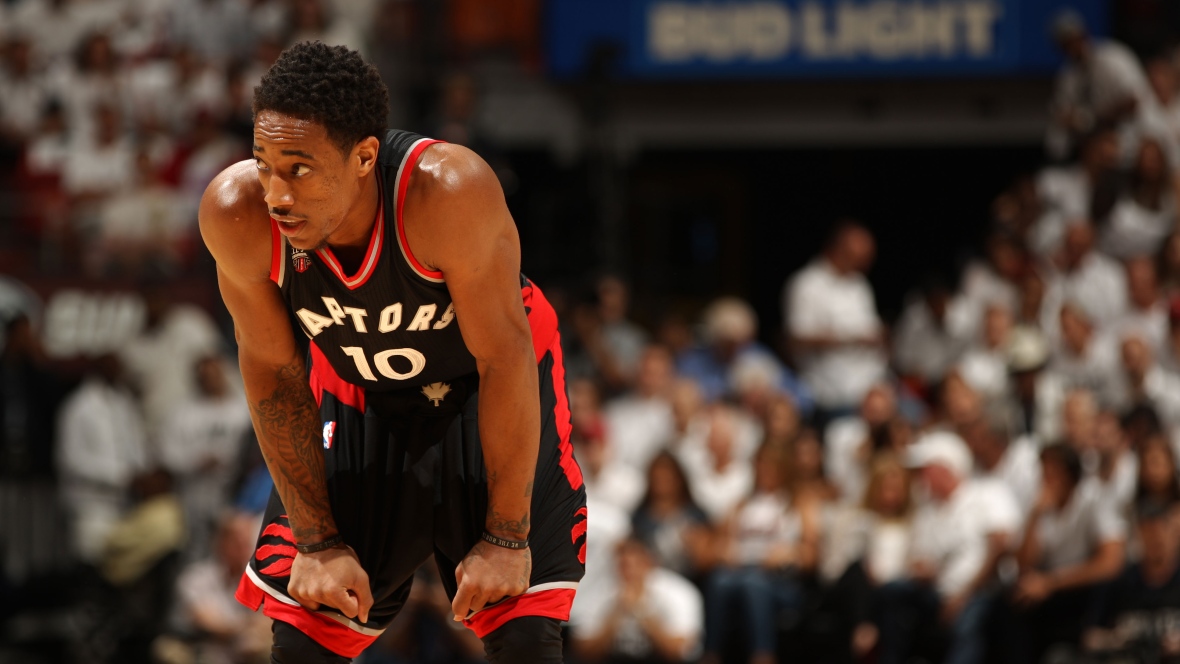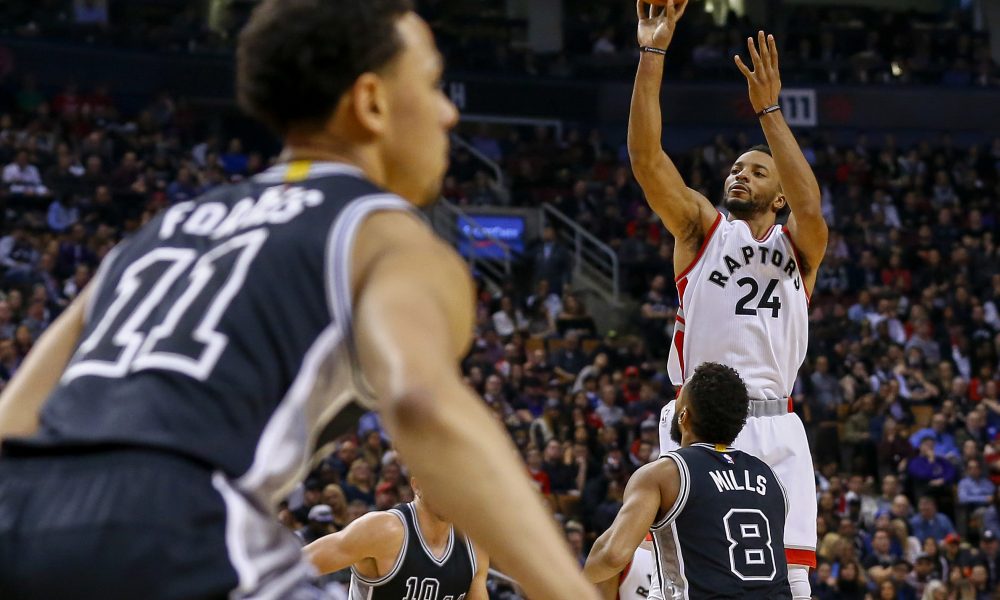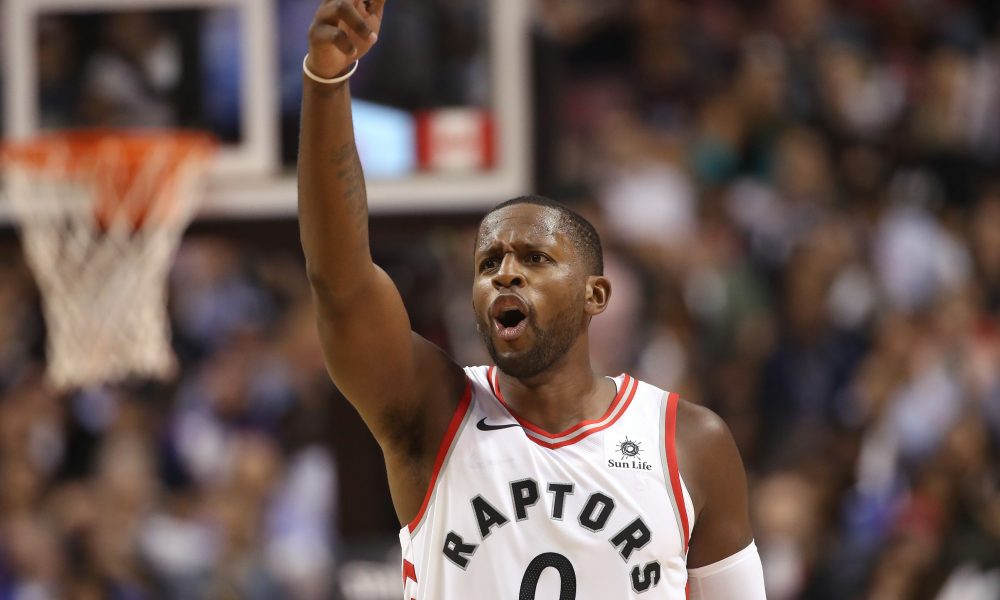It’s no secret that for the last few years, the Toronto Raptors have played an archaic style of basketball. It’s also no secret that their offense has been great, as they’ve been a top 10 team in offensive rating since the 2014–15 season. They’ve avoided the pace-and-space, three-point mania that’s washed over the league and turned teams like the Golden State Warriors and Houston Rockets into statistical dreamboats.
Dwane Casey deserves credit for this, no matter how many fans might grumble. He’s had his team play a style of offense that fits the personnel, allowing the Raptors to ride the indisputably great individual talents of Kyle Lowry and DeMar DeRozan. And as aforementioned, it’s worked well—per Synergy, last season the Raptors ran isolations at an 8.5 per cent frequency, good for sixth-most often in the league. Coming out of those possessions, they had an effective field goal percentage of 46.3 (second-best in the league), a free throw frequency of 15.4 per cent (second-best in the league), and a score frequency of 48 per cent (best in the league). This all landed the Raps in the 96.6th percentile for isolation plays.
Every postseason, however, things suddenly became less copacetic. Lowry or DeRozan would be banged up, the pace of the game would slow and take place primarily in the half-court, and isolation plays—for an entire 48 minutes—became the easiest offense to defend. The result was the Raptors failing to defeat LeBron James’ Cleveland Cavaliers each of the past two playoffs, and even less than that, pose them a serious threat to take the Eastern Conference crown.
So Casey decided to implement a “culture reset,” changing the style of the offense from an isolation-heavy one to one centered around movement—screens, hand-offs, cuts, etc.—conveniently titled the 5 Out Motion Offense. The goal of this offense is to ideally have the team make more and better passes, leading to a higher assist rate. It’s also meant, in this scenario, to bring the Raptors into 2017 by having them take and make more three-pointers than ever before. To this point, it’s working—per Basketball-Reference, the Raptors were 22nd in the league in three-point attempts last season, and 13th in makes. This season, a mere two games in, they are 11th in attempts and 14th—herein lies the questions about the Raptors’ shooting potential—in makes.
Out of everyone who has to adjust to this new style of offense, DeMar DeRozan is the one whose game is affected most. Last season was the best of his career, averaging 27.3 points, 5.2 rebounds, 3.9 assists and 1.1 steals on 46.7 per cent shooting. He started off 2016–17 red-hot, and then shouldered the entire offensive load when Lowry went down with an injury. He took 92 per cent of his shots from within the midrange (31 per cent of his shots came from 16-plus feet from the basket) and he made 48.4 per cent of them. He was seventh in the league in isolation possessions (behind only guys like LeBron, James Harden, and Russell Westbrook) and scored at a 50.7 per cent frequency (better than Kyrie Irving, Carmelo Anthony, and Damian Lillard).
Now, that game-to-game reliance is gone. There will still be plenty of nights Toronto needs DeRozan’s brilliant one-on-one skills, but it won’t be every night. As with everything in life, there needs to be a balance, and it will be those times when DeRozan isn’t shooting well that we’ll hopefully see his retooled game, and truth to his promise that he desires to lead the team in assists.
And while this new system isn’t ideal for DeRozan’s skill set, it doesn’t mean he can’t thrive, either. Sure, it would help if he could shoot three-pointers (28 per cent for his career), but seeing as how we’re witnessing his ninth NBA season without significant change, it would be foolish to bank on a noteworthy improvement. Besides, he doesn’t need to shoot them to be effective.
Instead, DeRozan once again can turn to a guy he’s looked to model his game after before—Dwyane Wade. Wade has famously never been a strong three-point shooter, either (28.7 per cent for his career), despite being arguably the third-greatest shooting guard to ever play the game. But he’s never relied upon that sort of shot-making to make his presence felt. Rather, he learned to move so well off the ball that defenses were never able to entirely contain him.
By disciplining himself to make the proper cuts at the proper times, Wade is able to fabricate his own version of gravity, keeping defenders spread out and providing much-needed spacing for his team despite being a poor shooter from deep. If his man sticks close to him and never lets him out of his sight, Wade can keep his distance and allow driving lanes to open themselves up for fellow slashers. If his man sags off of him, Wade can make intelligent cuts—many of which are backdoor and along the baseline—and free himself up for an explosive finish at the rim.
If DeRozan can learn to make similar plays, he’ll unlock his full potential in the new offense. The motion style obviously requires movement to work, and DeRozan has never been an especially stellar off-ball player. That’s not really his fault, of course—last season, for example, he had a career-high 34.3 usage percentage, meaning that the ball was in his hands all of the time. He simply hasn’t had a lot of opportunity to play off-ball, and the few possessions he ends up doing so he tends to float around the perimeter where he’s least useful.
Again, it’s important to reiterate that finding a balance is vital. This new offense doesn’t mean that DeRozan needs to entirely stop being who he is—for one, that would be a herculean task for Casey to accomplish, as well as detrimental to the team’s success. When DeRozan is feeling it, making midrange shots and working guys down on the block, he should be allowed the freedom to do so without criticism. And, of course, there will still be close, end-of-game situations where his isolation prowess will prove invaluable.
Yes, DeRozan will probably score less this season. And yes, he’ll touch the ball less. But the result could be the greatest version of him that we’ve ever seen—a version that, when April arrives, will be prepared to cut up teams in a brand new way and take the Raptors to greater heights than ever before.



